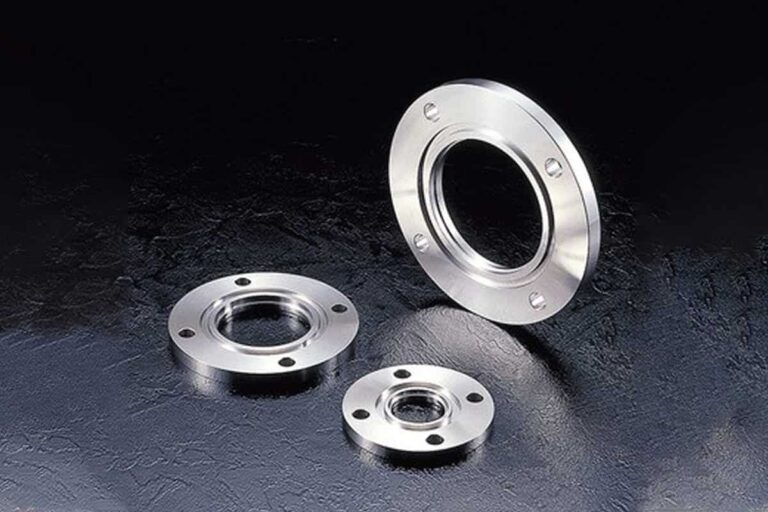In the world of manufacturing processes, the requirement for accuracy and efficiency cannot be underestimated. One of the commonly neglected but essential components that play a role to achieving these aims is the vacuum sealing flange. These advanced fixtures play a key role in preserving the reliability of vacuum installations across a range of uses, from chip manufacturing to scientific investigations. By delivering a trustworthy seal that hinders the leakage of gases and contaminants, vacuum flanges help to maintain and support the environment necessary for peak efficiency.
As sectors continue to advance and seek new methods to enhance productivity, the value of vacuum flanges has become ever apparent. Their capacity to enable high-performance operations in harsh conditions makes them indispensable in multiple sectors. Whether it’s through enabling high-tech substances fabrication or backing cutting-edge test setups, vacuum flanges are revolutionizing the environment of industrial methods and providing solutions that push the boundaries of what is feasible.
Grasping Vacuum Flange Components

Vacuum flange components are critical parts in the architecture and operation of vacuum devices. Such components create a tight seal among various parts of vacuum systems, ensuring that the required low pressure can be sustained. They come in various shapes and sizes, tailored to meet the specific demands of different applications, spanning from laboratory research to large-scale industrial operations. The performance of a vacuum flange is defined by its ability to resist atmospheric pressure and prohibiting gas or air leaks in the vacuum.
The fabrication of vacuuming flanges typically requires materials which can resist wear and elevated temperatures, like stainless steel, aluminum, and at times specialized alloys. Each flange type, including KF, CF, and ISO flanges, addresses particular needs based on the application's pressure requirements and space constraints. These flanges are paired with corresponding sealing techniques, often using gaskets or O-rings, to enhance the integrity of the seal. This versatility makes vacuuming flanges essential for upholding ideal performance in different industrial settings.
In many industrial applications, the effectiveness of processes heavily is based on the quality of vacuuming systems. Vacuuming flanges play a crucial role in industries such as semiconductor manufacturing, pharmaceutical production, and materials research by ensuring that systems function under the desired vacuum environment. Their consistent performance can lead to increased productivity, reduced contamination risks, and enhanced overall process control, showcasing their importance in changing industrial operations and propelling technological development.
Uses in Manufacturing Settings
Vacuum fittings play a critical role in various industrial applications, especially in the fields of manufacturing and development. In microelectronics fabrication, vacuum flanges are essential for creating clean environments needed for the production of semiconductors. They help maintain the integrity of vacuum systems, ensuring that impurities do not interfere with the complex processes involved in wafer processing. Their ability to provide a secure seal makes them necessary in maintaining the required low-pressure conditions.
In the field of gas analysis, vacuum flanges are used to connect various analytical instruments, enabling exact measurements in laboratories and industrial facilities. These flanges ensure that a vacuum is maintained within the system, which is important for accurate readings of gas concentrations and properties. By providing a secure connection that minimizes leaks, vacuum flanges enhance the trustworthiness of data generated from these analytical processes, eventually leading to enhanced decision-making in industrial operations.
Additionally, vacuum flanges are utilized in the food and pharmaceutical industries, where they help in various processes such as freeze-drying and vacuum packaging. The ability to create a vacuum not only maintains the quality and safety of the products but also extends their shelf life. In these sectors, the integrity of vacuum systems is essential for maintaining product standards, and vacuum flanges serve as the important components that ensure consistent performance throughout the processing stages.
Future Developments in Vacuum Technology
As sectors continue to aim for greater productivity and responsibility, the prospects of vacuum technology is poised for significant advancements. One key trend is the adoption of intelligent technology within vacuum systems. Smart vacuum flanges equipped with monitoring tools and connectivity will provide instant monitoring of vacuum levels and system health, allowing for predictive maintenance. This shift will not only enhance operational reliability but also reduce downtime and costs associated with unforeseen failures.
Another trend on the horizon is the creation of more green materials for vacuum flanges. As sustainability concerns grow, manufacturers are exploring alternatives to standard metals and plastics that can enhance performance while being sustainable. Bio-based materials and innovative composites are being studied to meet the requirements for lighter, enhanced and more sustainable vacuum components. These innovations are expected to support sectors in meeting strict regulatory standards and corporate eco-friendly goals.
Additionally, the move towards compact designs in various industries will drive advancements in vacuum technology. As applications in technology and pharmaceuticals demand miniature, more efficient systems, vacuum flanges will be designed to accommodate these shifts without diminishing performance. This trend towards smaller products will allow for the creation of more complex vacuum systems that can work efficiently in limited spaces, ultimately changing practices across multiple industries.
